This may be my new favorite way to fix fish.
A post from Carolyn. A few weeks ago I was watching Ina Garten’s new TV show, Be My Guest (I think that’s what it’s called), and she had Julianna Margulies visit her, in Ina’s lovely Long Island kitchen. I’ve been such a fan of Julianna Margulies since she was on The Good Wife. So sorry that show ended. I didn’t know that Julianna loves to cook, and she prepared halibut for Ina.
Julianna explained that this is her signature company dinner entrée. With that kind of a recommendation, I knew before she started that it would be something I’d prepare. They had the most beautiful 1-inch thick halibut steaks, probably the kind you can’t get unless you go to a fish market or caught the fish yourself and asked for 1-inch thick slices. My Costco has fresh halibut right now, so that was the impetus for making it. And let me tell you, this preparation is so very EASY! The down side is that halibut is ferociously expensive. I bought a small piece (that I was able to get 4 small servings out of) and after making this, I vacuum-sealed the other three portions – with a little plastic wrap packet of the herb butter stuck on top of the halibut.
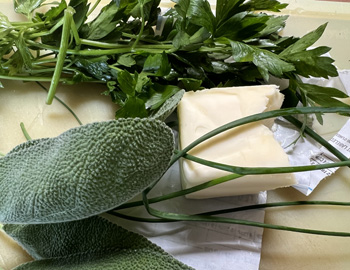 First you make up an herb butter. What I had (fresh) was sage and chives (both survived last winter and continue to provide this summer) and Italian parsley. You also add garlic to the mix.
First you make up an herb butter. What I had (fresh) was sage and chives (both survived last winter and continue to provide this summer) and Italian parsley. You also add garlic to the mix.
There at left you can see the various components. Sage leaves have such a different texture to them.
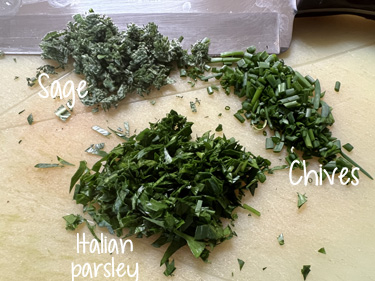 The butter needs to be at room temp and you carefully chop up the herbs and garlic and add it to the butter. With a bit of lemon zest too. Mix it well and set it aside. If time permits, do this an hour or so before you’re ready to begin cooking the halibut.
The butter needs to be at room temp and you carefully chop up the herbs and garlic and add it to the butter. With a bit of lemon zest too. Mix it well and set it aside. If time permits, do this an hour or so before you’re ready to begin cooking the halibut.
The halibut is salted and peppered before starting. And a note of caution – the rest of your meal needs to be completely ready to go and serve. You’ll have no time for other kitchen prep once you start the halibut. The stovetop grill pan is heated to high/medium-high and you drizzle a bit of EVOO on it before laying on the halibut steaks. At that point set a timer. My halibut steaks were about 3/4″ thick (not the 1-inch called for) so I knew they would cook in less time. Do set a timer – I know I said this before – but it’s worth repeating. The recipe indicates you melt the herb butter at this point – I didn’t, as the herb butter was so soft it was almost melted in the bowl! Once the fish is turned over (it should have a beautiful golden glow on it) you turn OFF the heat and slather on, or pour most of the herb butter on top of the halibut. If you used the soft butter, it melts in seconds. Cover the pan with a lid or a piece of foil and set a timer again. This time you set it for 3 minutes (if your steaks are 1″ thick). I set mine for 2 minutes. Everything else was ready to plate, so I slid the halibut off onto a plate (or heated platter if you’re doing several) and poured what little herb butter was in the pan itself (my grill pan does have a handle) and the remainder I had set aside. It melted immediately. Sprinkle with lemon zest, the little curl-type. Serve.
What’s GOOD: oh my, so good. But then, I love the lovely big flakes of fish that come from halibut. The fish was beautiful to look at and serve, (the lemon zest on top adds a lot – that happened to be something Ina added to the recipe) and so tender and moist. This cooking method is genius. I’d serve this to guests anytime. Just know you’ll be making a big dent in your wallet to buy several hunks of 1″ halibut steaks.
What’s NOT: only that you want to make this with halibut (or maybe sea bass). All expensive. I’ll try it with cod too – it might be nice.
printer-friendly PDF and MasterCook file (click link to open recipe)
* Exported from MasterCook *
Halibut with Herbed Butter and Lemon Zest
Recipe By: Ina Garten’s show, Be My Guest, from Julianna Margulies
Servings: 4
HERB BUTTER:
8 tablespoons unsalted butter — softened
2 garlic cloves — minced
1 tablespoon fresh rosemary leaves — minced fine
1 tablespoon Italian parsley — minced, plus extra for garnish
1 tablespoon fresh chives — minced
1 tablespoon fresh thyme — minced
1 tablespoon fresh sage — minced
1 teaspoon lemon zest — grated
Kosher salt and freshly ground black pepper
HALIBUT:
2 tablespoons extra virgin olive oil
2 pounds halibut fillets — (6 to 8-ounces each) about 1″ thick, skinless
salt and pepper to taste
2 tablespoons lemon zest — for garnish
NOTE: If your halibut is less than 1″ thick, adjust cooking time down so it won’t overcook (i.e., 3/4″ would need 2 minutes each side)
1. HERB BUTTER (if time permits, prepare butter one hour ahead): in a small bowl, combine the butter, garlic, chopped herbs, and lemon zest plus salt and pepper to taste. Mix thoroughly and transfer to a small saucepan and set aside.
2. HALIBUT: Heat the olive oil in a grill pan over high heat. Sprinkle the halibut generously on both sides with salt and pepper. When the grill pan is hot, place the fish on the pan, and cook for about 3 minutes on one side. Do not move the fish.
3. Meanwhile, heat the herb butter just until melted.
4. Turn the fish over, lower the heat to medium, and pour most of the melted herb butter over the fish. Cover the pan with a lid or a piece of aluminum foil, turn off the heat, and allow to sit for 3 minutes.
5. SERVE: place the fish on a heated serving platter, spoon the herb butter from the pan over the fish, then add any reserved herb butter you set aside, sprinkle with extra parsley and lemon zest. Serve hot.
Per Serving: 476 Calories; 33g Fat (62.4% calories from fat); 43g Protein; 2g Carbohydrate; 1g Dietary Fiber; 172mg Cholesterol; 159mg Sodium; trace Total Sugars; 11mcg Vitamin D; 45mg Calcium; 1mg Iron; 1026mg Potassium; 548mg Phosphorus.





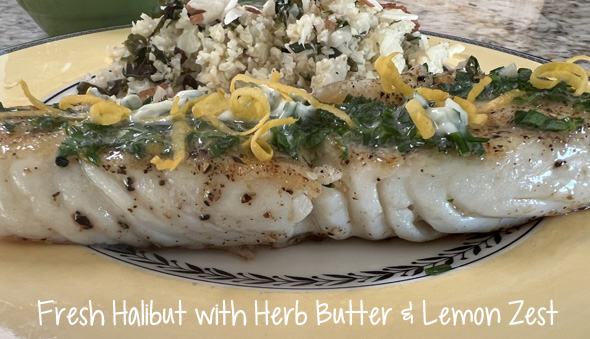

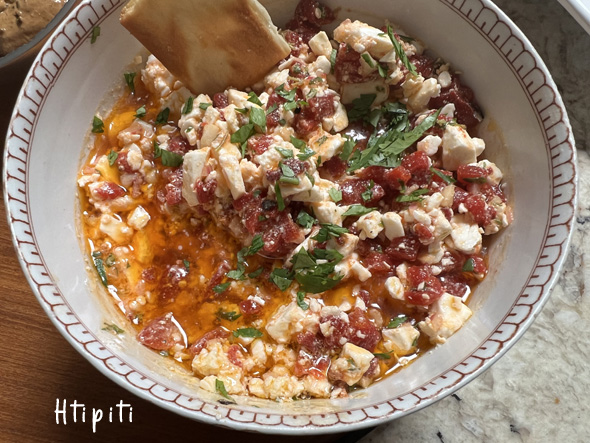
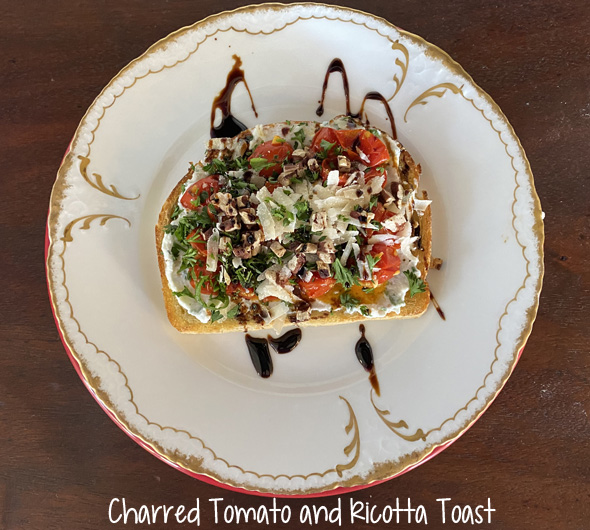
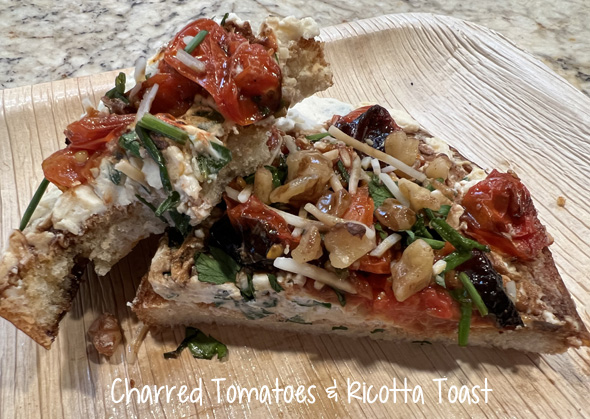
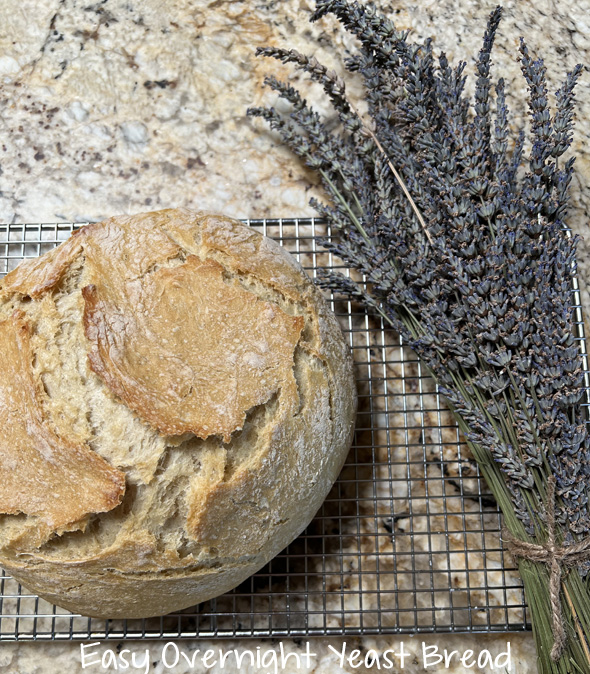
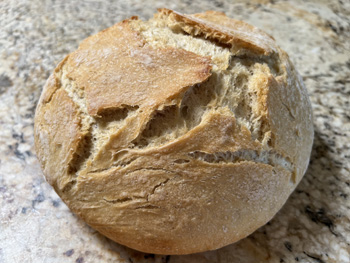
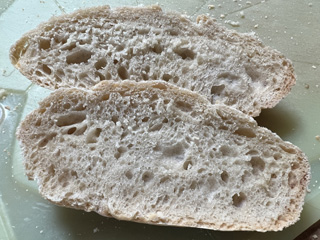
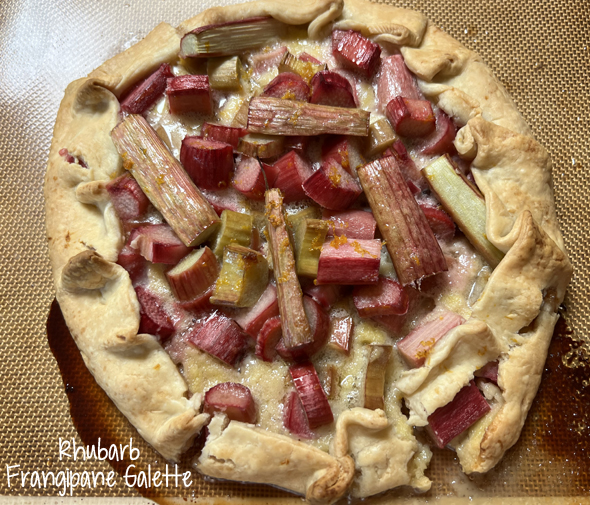
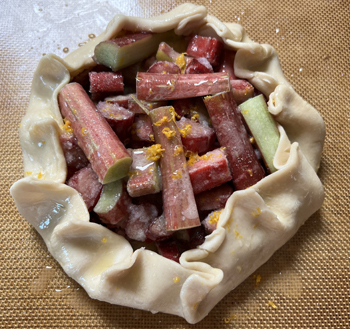
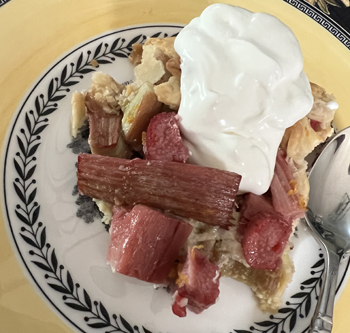
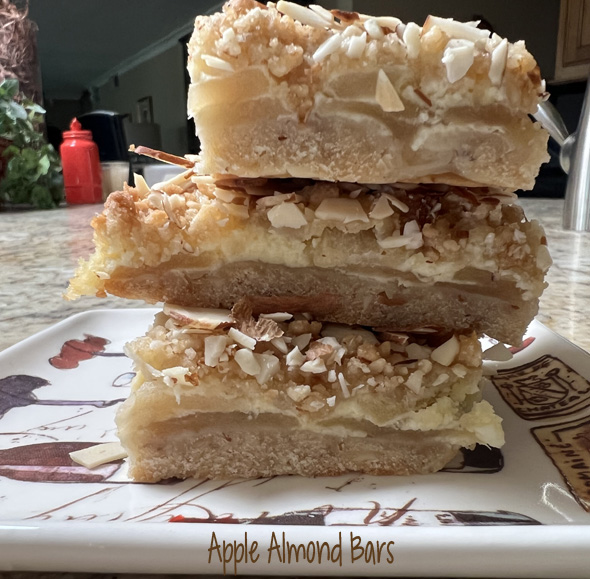

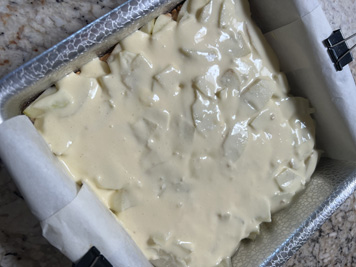
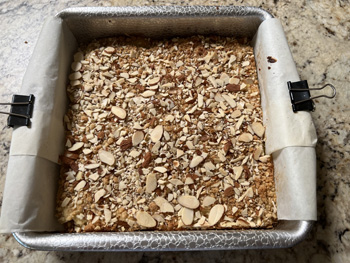
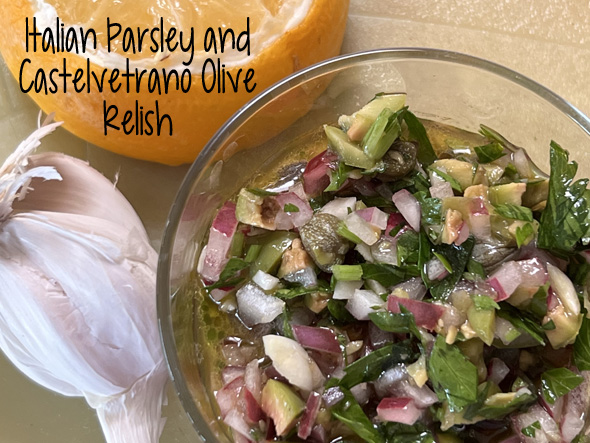

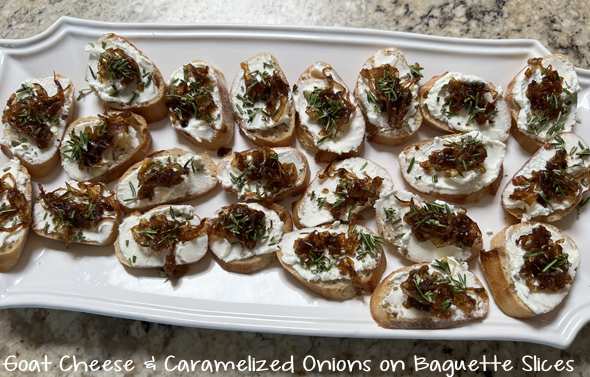
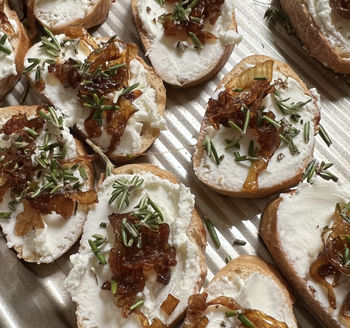
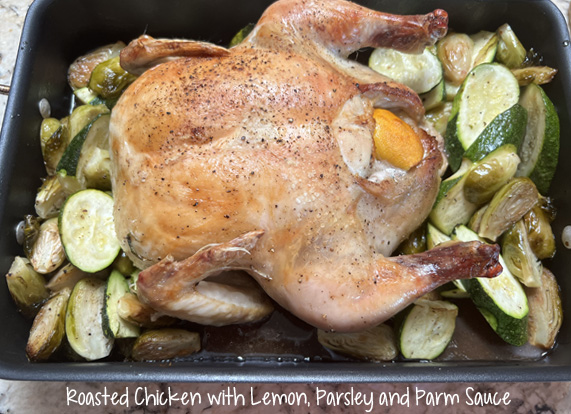
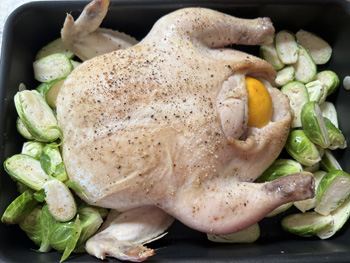

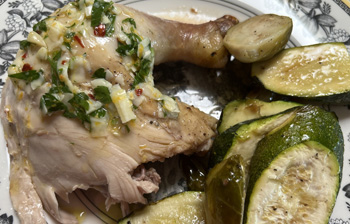
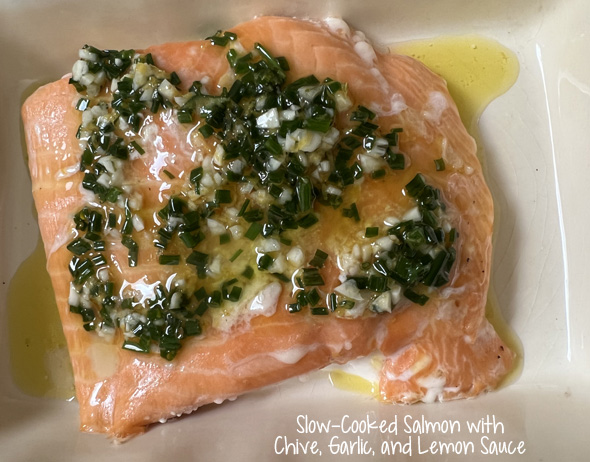
Leave a Comment!